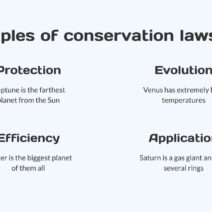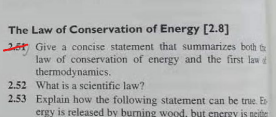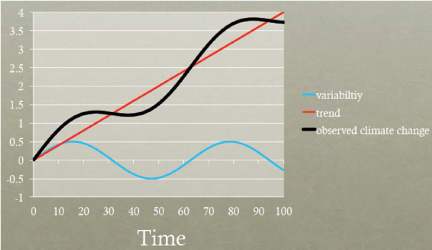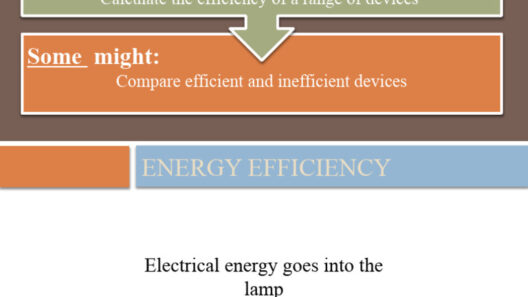The Law of Conservation of Energy is one of the most fundamental principles in physics. It states that energy cannot be created or destroyed, only transformed from one form to another. Understanding the origins of this law requires a journey through the intellectual landscapes of history, where significant figures contributed pivotal insights that shaped our comprehension of energy itself.
The foundations of the conservation law can be traced back to the works of various philosophers and scientists throughout the ages, but it was during the 19th century that the concept saw remarkable advancements and formalization.
The Enlightenment Era and Early Ideas
Prior to the 19th century, the concept of energy was not understood in the same way as we perceive it today. Ancient philosophers, such as Aristotle, presented rudimentary ideas regarding the nature of motion and force, but these theories lacked empirical substantiation. It wasn’t until the advent of the Scientific Revolution in the 17th century that significant progress began to surface.
One notable figure during this period was Sir Isaac Newton, whose laws of motion provided a framework for understanding forces and their effects on objects. He introduced the idea that an object in motion remains in motion unless acted upon by an external force, which laid groundwork for later discussions on energy dynamics.
In the 18th century, the concept of heat and its relationship to work started gaining attention. Joseph Black, a Scottish physicist, and his contemporaries began investigating the nature of heat and caloric, which they believed to be a substance. This early exploration pointed to the existing relationships among various forms of energy, albeit with limitations in terminology and understanding.
The Birth of Thermodynamics
The true leap towards formalizing the Law of Conservation of Energy occurred with the development of thermodynamics in the mid-19th century. The work of scientists, such as James Prescott Joule and Hermann von Helmholtz, was crucial in this progression. Joule conducted meticulous experiments that demonstrated the equivalence of mechanical work and heat transfer. His famous experiments involving falling weights and their conversion into heat energy substantiated the idea that energy could be transformed between mechanical and thermal forms.
As thermodynamics evolved, it became clearer that these energy transformations obeyed consistent principles. Joule’s assertion, now known as Joule’s law, established a crucial relationship among energy forms that reinforced the notion of energy conservation.
Hermann von Helmholtz further advanced the theory by articulating the principle of conservation of energy in 1847 in his seminal work, “On the Conservation of Force.” Helmholtz proposed that energy exists in various forms, including kinetic, potential, and internal energy, and that although energy might change forms, the total amount remains constant within an isolated system. His insights synthesized existing ideas and provided a coherent framework for the conservation of energy that would be widely accepted in the scientific community.
The 19th Century: Consolidation and Acceptance
With the groundwork firmly laid by Joule and Helmholtz, the late 1800s saw the Law of Conservation of Energy gaining notable traction among scientists. The formulation of energy as a quantitative measure rather than an abstract concept bridged a gap in understanding between mechanics, thermodynamics, and eventually electrical systems.
This period also marked the synchronization of different scientific disciplines. The realization that energy conservation applies universally across various fields – from mechanical systems to biological processes and chemical reactions – underscored the law’s significance. It formed a pivotal axiom that spurred further explorations in fields such as quantum mechanics and relativity.
Implications and Legacy of the Conservation Law
The Law of Conservation of Energy has profound implications that extend beyond theoretical applications. In the context of contemporary challenges, such as climate change and sustainable energy practices, understanding energy conservation is vital. It offers insight into how we harness, utilize, and manage energy resources effectively.
This principle also serves as a cornerstone in the technological advancements of modern society. The transition towards sustainable energy solutions, such as wind and solar power, hinges on understanding how these forms of energy can replace traditional fossil fuels while adhering to the fundamental laws of physics.
As scientific inquiry continues to evolve, the Law of Conservation of Energy remains a dynamic and essential part of our understanding of the universe, influencing both theoretical exploration and practical applications. Its legacy as a foundational concept exemplifies the enduring nature of scientific principles, guiding future generations of scientists, engineers, and environmental stewards in their quest for knowledge and sustainability.
In conclusion, the Law of Conservation of Energy was not birthed from a singular individual but emerged through the collaborative efforts of many brilliant minds across centuries. From the early musings of philosophers to the groundbreaking discoveries of 19th-century scientists, the journey to understanding this law illustrates the collective intellectual endeavor that has shaped our comprehension of the physical world. As we confront pressing global challenges, this principle stands as a beacon, reminding us of the interconnectedness of energy within our universe.







